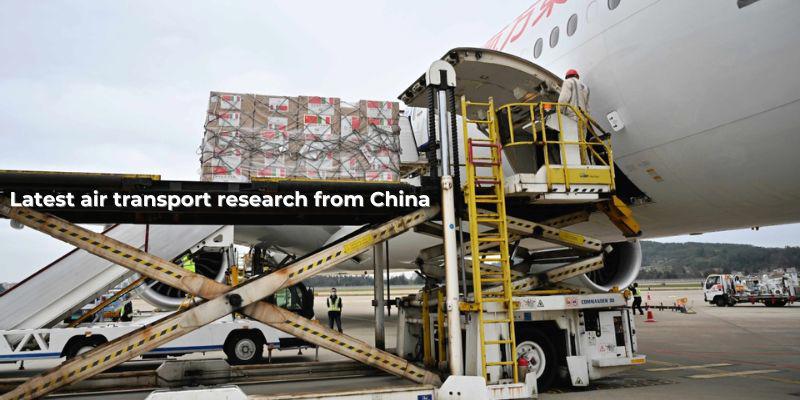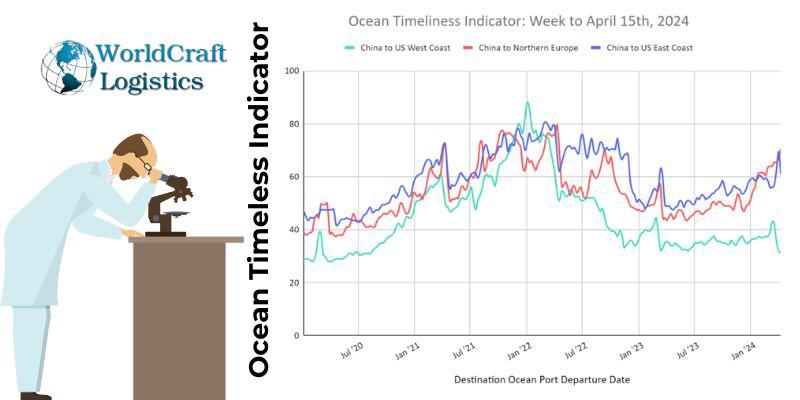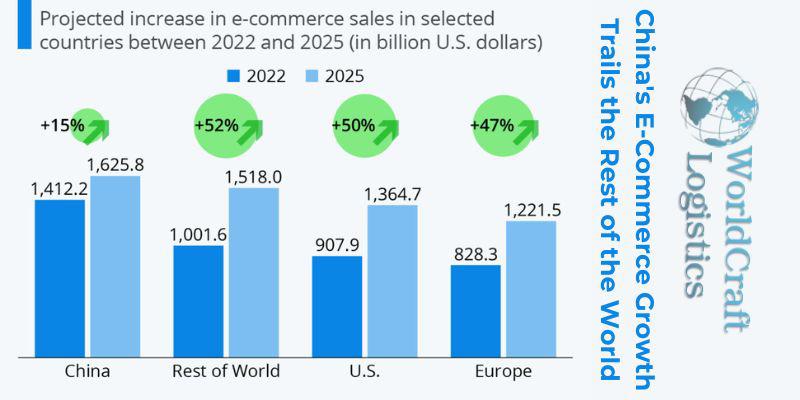
Starting June 1st, 2023 Our warehouse fee will be $0.65/cubic foot per month
In effort to lower the warehouse storage fee during inflation, we have went narrow aisle racking.This construction took us four months but the project is finally completed. With narrow aisle racking, we are able to drop storage by 24%.We as partners will go through this inflation together.
05/03/2024
As the market upcycle continues to gather momentum, a looming capacity crunch in the fourth quarter becomes increasingly apparent.

Resurgent air cargo demand, fueled by a quasi-blockade of Red Sea shipping and sustained growth in bookings by Chinese e-commerce platforms, is driving rising rates during what is typically a slow shipping period. This trend is generating high expectations among air carriers for the peak season while causing concern among logistics providers about securing adequate capacity.
Air cargo demand has experienced double-digit growth for four consecutive months, accompanied by steady rate increases since late February. The strength of this market rebound, following a prolonged downturn that reached its nadir last August, has caught industry observers by surprise. However, the uneven distribution of recovery across regions suggests that the comparison with a weak 2023 contributes to the perception of a more robust market.
Key drivers of this growth include ongoing challenges in ocean shipping reliability and the significant presence of Chinese e-commerce giants such as Shein, Temu, and Alibaba. These companies' insatiable demand for airlift, particularly in the business-to-consumer (B2C) segment, is straining capacity, with Taiwan-based logistics provider Dimerco Express cautioning that commitments for airlines operating between China/Hong Kong and U.S./European destinations are already fully booked for the year. This situation could pose challenges for freight forwarders seeking consistent space for their shipments.
According to rate benchmarking platform Xeneta, airfreight volume surged by 11% in March compared to the previous year. This growth trend has been remarkably consistent, with Xeneta data showing an 11% increase in both January and February as well. Supporting these findings, the International Air Transport Association recently reported a 11.9% surge in demand for February.

The robust start to 2024 is highlighted by a notable 6.2% increase in cargo jet flight activity during the first quarter, marking the sector's first positive growth in two years, as revealed by research conducted by BMO Capital Markets. Furthermore, flight activity for the global air cargo sector surged by 6.8% in March compared to the previous year.
Driven by a surge in airfreight from new origins surpassing the available capacity, the average global airfreight spot rate experienced a 7% increase in March compared to the preceding month. Contrastingly, a year earlier, freight rates plummeted by more than 40% as the pandemic began to wane. Notably, the global average spot rate has witnessed a consistent upward trend over the past seven weeks, marking a 9% increase from the previous month and a 6% rise from the corresponding period in 2023. Consequently, the year-over-year discrepancy in rates has nearly vanished, with the global shipping price, standing at around $2.55/kg, now exceeding pre-COVID levels by 40%. Just a month ago, rates were 15% lower than at the same time last year.
Niall van de Wouw, Xeneta’s Chief Airfreight Officer, commented in his monthly report, "The level of demand in the first quarter doesn’t indicate a market which is running out of steam so far."
The most significant activity is observed on trade routes originating from the Middle East and Southeast Asia to Europe, as well as from China to Europe and the United States. The robust performance of these corridors is bolstering the overall global average. Notably, this upturn in demand nearly propelled United Airlines back to growth in the first quarter, with revenue experiencing only a modest 1.8% decline year over year, a notable improvement from the 31% contraction witnessed in 2023.
Related articles:
👉 Modal shifts in the Red Sea and an e-commerce push have driven March air volumes up by 11% YoY

The disruption caused by Houthi rebel missile and drone attacks on commercial shipping in the Red Sea has prompted some businesses reliant on dependable supply chains to resort to air transportation to circumvent delays. Vessel operators have been compelled to reroute their vessels away from the Red Sea, resulting in transit times extending by 10 days or more. In February, vessel schedule reliability on the Asia-to-Northern Europe route plummeted to a low of 34%, according to Sea-Intelligence. Flexport, a logistics provider, recently revealed that research indicated the ocean journey from China to Northern Europe, measured from factory to departure from the destination port, now spans 70 days. Apparel companies in Bangladesh, India, and Sri Lanka, eager to avoid missing out on the spring fashion season in the West, are likely instigating this shift in transportation mode, as suggested by Niall van de Wouw, chief airfreight officer at Xeneta, during a recent episode of The Loadstar podcast.
Nevertheless, demand appears to be tapering off. With catch-up production and distribution efforts following China’s Lunar New Year holiday now completed, shippers are less pressed to opt for expedited transport. Additionally, container lines have had sufficient time to recalibrate vessel networks, adapting to the new norm of circumnavigating Africa rather than utilizing the Suez Canal shortcut, which remains vulnerable to Houthi rebel attacks. Ocean schedules have stabilized further as carriers have introduced spare capacity to accommodate extended transit times seamlessly, without interruptions, noted Judah Levine, head of research at Freightos, in his recent industry outlook.

As of mid-April, Xeneta reports that demand growth has slowed to 8% year-over-year. However, a significant wildcard looms with the potential for regional conflict, exemplified by Iran's recent aerial attack on Israel and the seizure of an Israeli-owned container vessel by Iranian forces in the Persian Gulf, which could disrupt shipping lanes from Dubai and other ports, potentially necessitating air diversions.
During the first quarter, demand outpaced capacity growth, leading to upward pressure on rates and boosting load factors by two points to 61%. However, these dynamics are beginning to shift. Supply in April has increased by approximately 11% compared to a year ago. Moreover, an influx of aircraft from passenger airlines in preparation for the summer travel season is expected to significantly augment total cargo capacity in the coming weeks. Nevertheless, the availability of cargo space could be impacted if flights are heavily laden with passengers and baggage.
Despite the influx of widebody aircraft, capacity remains constrained on the trans-Pacific corridor due to Asian carriers' incomplete network rebuild post-pandemic and ongoing diplomatic tensions between the United States and China. U.S. authorities have been slow to reinstate permits for Chinese airlines, citing competitive advantages stemming from Russian overflight privileges, while U.S. carriers must circumvent Russian airspace. Although the Department of Transportation raised the weekly flight limit for Chinese airlines from 35 to 50 in April, this represents only a third of pre-COVID flight activity.
Some airlines are responding to market conditions by introducing more freighters in Asia. For instance, CMA CGM Air Cargo plans to launch a new Boeing 777 cargo jet service between Hong Kong, Chicago, and Seoul in the second half of the year. Another 777 may commence operations late this year to connect China and North America.
In regions severely affected by the pandemic, such as the Indian subcontinent, airfreight demand is starting to wane this month as shipping delays and equipment shortages alleviate.
Although air tonnage from Dubai to Europe has more than doubled compared to last year, it has decreased since early March when volumes tripled. This shift reflects a growing preference for sea-air options, involving ocean transport from Asia and Southwest Asia to Dubai, followed by seamless transfers to aircraft due to the proximity of the port and airport. Shippers in Southeast Asia, particularly Vietnam, are also opting for road transport to Bangkok, where goods are trans loaded onto aircraft bound for Europe and North America to circumvent ocean delays. Air cargo demand in Bangkok has decreased by 13 points since early March but remains 33% higher than last year. Similarly, air exports from Sri Lanka have slightly contracted this month after surpassing 20% growth compared to 2023 seven weeks ago.
Furthermore, the average spot rate from the Middle East and South Asia to Europe surged by 46% in March from February and 71% year-over-year, exceeding $2.80/kg. Prices have continued to soar this month, more than doubling compared to a year ago.


The surge in direct-to-consumer shipping from China is significantly impacting air cargo demand and rates. Traditionally, most international online purchases in Europe and North America were fulfilled from inventories housed in U.S. warehouses following shipment by ocean carriers.
According to Catherine Chien, a marketing executive at Dimerco Express Group, e-commerce now constitutes approximately 50% of air cargo originating from South China and Hong Kong, and 30% of every kilogram of airfreight exported from Shanghai Pudong airport.
Thomas Kempf, senior director of global airfreight development at Flexport, noted during a company webinar in March that global airfreight capacity is not growing at the same pace as e-commerce demand. E-commerce currently represents about 35% of airfreight volumes originating from the Asia-Pacific region.
Logistics experts, including those at Dimerco, observe a heightened demand for block space agreements among freight forwarders. These agreements, which reserve a predetermined amount of cargo space on specific flights, are in high demand due to the substantial share of available capacity occupied by e-commerce shipments outbound from China and other Asian locations. Forwarders seek these space guarantees to support their own e-commerce business or to ensure they can meet the shipping needs of other customers, particularly during the busy holiday shopping season.
Airlines are allocating a larger portion of space on outbound China flights for pre-purchased allocations this year, according to Chien. This trend is expected to result in reduced capacity available on the open market during peak seasons, potentially leading to higher rates unless flight frequencies increase.
Atlas Air, a U.S.-based carrier, has recently initiated six weekly flights using a 777 freighter between China and the U.S. The partnership with freight forwarder YunExpress follows the launch of a dedicated route from Xiamen, China, to Miami in December.
As of mid-April, rates from Hong Kong to Europe and North America have increased by approximately 11% and 8% year-over-year, respectively, while rates on outbound routes from Shanghai, China, to North America remain comparable to last year. The current cost to ship products from Hong Kong to the United States stands at around $5.50/kg, marking a one-third increase compared to pre-pandemic levels.

Despite the tighter market conditions, shippers are favoring short-term capacity purchases over long-term contracts in anticipation of potential easing of disruptions in the Red Sea and increased passenger belly capacity entering the market for the summer season, as noted by Xeneta. Manel Galindo, chief revenue officer of Freightos and head of the WebCargo platform, explains that forwarders' preference for multi-month air contracts had surged late last year due to rising spot rates and uncertainty in ocean shipping. However, the current trend is shifting back towards immediate transactions as freight flows around the Red Sea stabilize.
Despite today's heightened performance, air cargo providers maintain an overall optimistic outlook for solid volume growth throughout the year.
Michael Steen, CEO of all-cargo operator Atlas Air, anticipates market growth of approximately 3.5% to 4.5% for the full year compared to 2023, as the industry emerges from the trough.
While global economic indicators remain mixed, conditions favorable to air cargo are trending positively. Global smartphone shipments, a significant product category for airfreight, have increased by 7.8% in the first quarter compared to the same period last year, marking the third consecutive quarter of growth, as reported by the International Data Corporation (IDC).
The Purchasing Managers Index (PMI) for U.S. manufacturing has moved into growth territory, signaling increased demand for goods and boosting factory production, along with orders for industrial machinery and equipment. Manufacturing, a key indicator for air cargo growth, is also rebounding in China and the United Kingdom. U.S. ocean imports are projected to rise by 11% this year compared to last, according to the National Retail Federation's Port Tracker report. In Europe, although inflation has declined for the third consecutive month to 2.4%, manufacturing continues to contract.
Negotiations between East Coast ocean terminals and longshoremen are closely monitored. A potential strike by dockworkers in October following the expiration of their contract could prompt retailers and manufacturers to divert shipments to airlines to avoid delays. Many businesses are already implementing contingency plans by accelerating shipments or redirecting moves to West Coast ports. However, if negotiations stall, the diversion of critical shipments to air transport could occur weeks before an official strike.
Furthermore, U.S. imports in the second half of the year may see an uptick if companies anticipate a possible election victory by Donald Trump, who has threatened a universal tariff of 10% and proposed increasing tariffs on Chinese goods by 60%, as suggested by supply chain consultant Jon Monroe on The Freight Buyers' Club podcast.
Despite these positive indicators, air cargo traffic in regions besides Asia remains weak, particularly out of Europe. Mark Zeck, senior research analyst at investment bank Stifel, notes that while there are strengths in rates and volumes, they are predominantly driven by specific regions (particularly Asia-outbound) and products (e-commerce), indicating that a full recovery mode for air freight has not yet been achieved.
SEO
Digital Marketing/SEO Specialist
Simon Mang is an SEO and Digital Marketing expert at Wordcraft Logistics. With many years of experience in the field of digital marketing, he has shaped and built strategies to effectively promote Wordcraft Logistics' online presence. With a deep understanding of the logistics industry, I have shared more than 500 specialized articles on many different topics.

Hot News
08/05/2024

Hot News
02/23/2023

Hot News
02/23/2023

Hot News
02/06/2023
Hot News
02/07/2023